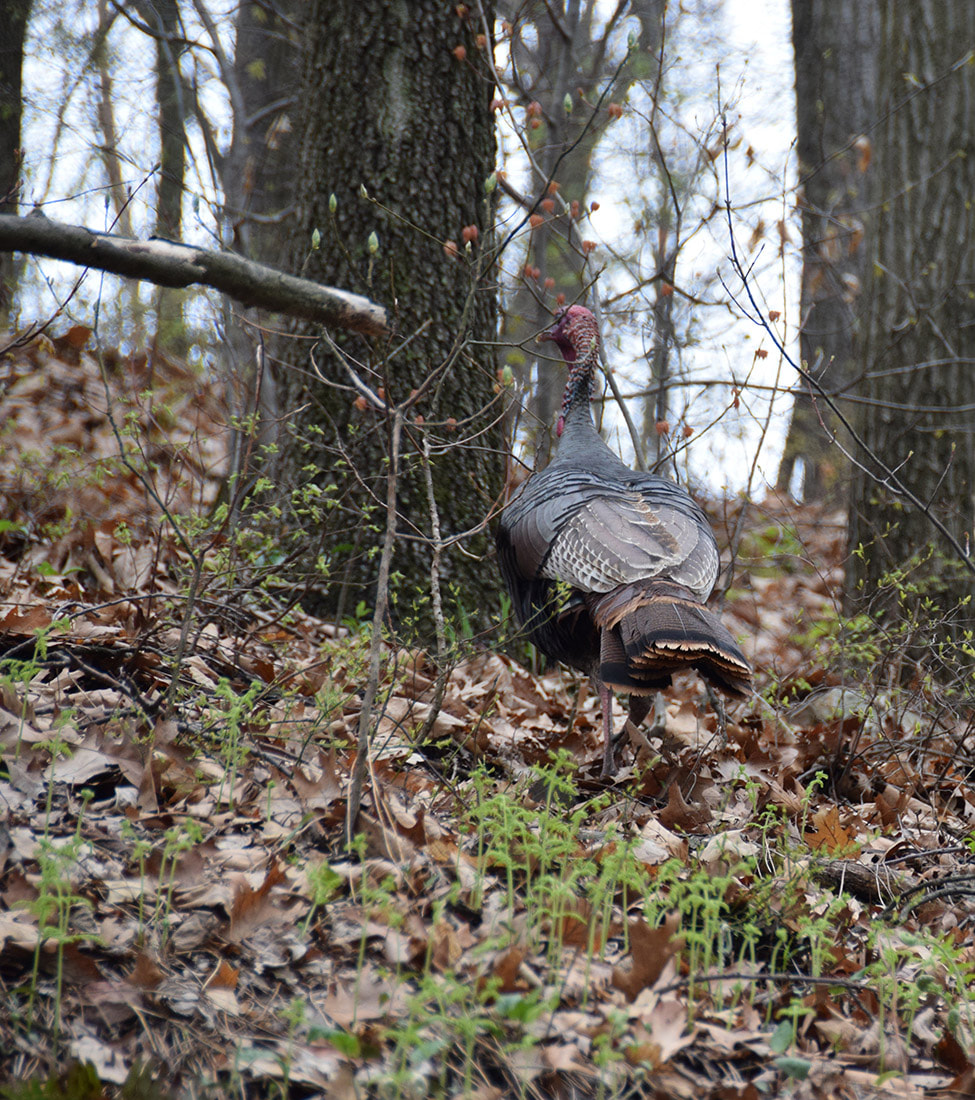 Fall turkeys have a tendency to run rather than fly when spooked. Photo by author Fall turkeys have a tendency to run rather than fly when spooked. Photo by author Today (Oct. 28) kicked off the fall turkey hunting season in most parts of the state. The exclusion is in local WMU’s 5C and 5D which haven’t been opened for fall turkey in some time. And depending on where you hunt, the game commission recommends checking season dates as their lengths are different in some management units and a handful changed this year. This is due to declining population trends and the results of an agency study that showed the longer fall season, the higher the female turkey harvest, which affects spring populations. The PGC says that during the fall turkey season, any turkey can be harvested because jakes, young males, are difficult to distinguish from females. According to Mary Jo Casalena, PGC turkey biologist, “Our research shows females (both juveniles and adult) comprise a larger portion of the fall harvest than males. Our research has shown that we shouldn’t overharvest females, and we shorten the fall season length when turkey populations decline to allow them to rebound.” Last year the PGC reports the fall harvest of 10,844 birds was 35 percent below the previous 3-year average of 16,688, and likely due to a combination of a decrease in fall hunting participation, shorter fall season lengths in many WMUs, below average turkey reproduction (smaller sized turkey flocks) and abundant acorn crops in much of the state. “This tended to scatter the flocks making them more difficult to locate,” Casalena explained. Casalena went on to say that turkey’s favorite foods such as acorn, beech and cherry production varied across the state, with beech nut, white oak acorn and soft mast production, such as apples and grapes, seeing average to above average production in many areas, but below average food production elsewhere. Said Casalena, “Areas with abundant food sources tend to make the flocks more nomadic and harder for hunters to find. Whereas lack of food tends to keep flocks congregated where the food exists and, therefore easier for hunters to find.” Hunters may want to consider the new Thanksgiving three-day season that will provide added opportunities for hunting and it’s also a very successful period as about 18 percent of the harvest occurs during these three days, advises the PGC. As for the 2017 spring gobbler season, the agency said the harvests (including youth, mentored youth and harvests from the special two-bird turkey license) totaled 38,101, which was six percent above the 2016 (35,966) spring harvest and similar to the previous long-term average. Interestingly, hunter success for the first bird, 19 percent, also increased from 2016 (15 percent) and was 18 percent above the long-term average of 16 percent. Hunters are reminded to report any leg-banded turkeys they harvest or find. Presumably the latter means a deceased turkey that was killed by automobile or coyote. The latter a situation that happened some time ago to a Berks County hunter who said he shot a turkey and as it was flopping around from the shot, a coyote appeared, grabbed it and ran off with it. The hunter was too shocked to shoot it as well. Turkeys with stamped leg bands include a toll-free number to report it. The information is beneficial to the PGC and hunters can learn the history of the bird when reporting it. Turkey hunters should also keep in mind the blaze orange rule where you must wear blaze orange while moving through the woods and post a minimum of 100 square inches of it within 15 feet of your hunting location.
0 Comments
Leave a Reply. |
AuthorNick Hromiak has been an outdoors and automotive writer for over 30 years. He's been published in numerous national and state-wide outdoor magazines and newspapers.
|
Proudly powered by Weebly
 RSS Feed
RSS Feed